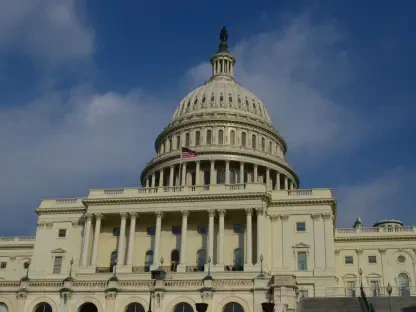The U.S. government’s recent push to shape artificial intelligence systems into ideologically neutral entities marks a significant inflection point in AI policy. This initiative, spearheaded by the Trump administration, has sparked rigorous debate and poses questions about the real-world implications of stripping AI models of so-called “woke” biases and how this will impact society’s encounter with technology.
Government’s AI Policy Shift
Given the accelerating role of AI in federal operations, the U.S. has implemented new policies intended to modify existing AI frameworks. At the core of the Trump administration’s plan is the quest to embed ideological neutrality into AI systems. This redirection from previous policies that highlighted race and ethnicity as focal points for bias scrutiny underscores a nuanced approach toward ensuring AI remains an impartial truth-seeker. The administration’s determination to excise perceived ideological bias from AI seeks to recalibrate discussions around free speech and equity.
Procurement and Guideline Modifications
Tasked with the formidable responsibility of revising AI procurement guidelines, the Office of Management and Budget (OMB) has a 120-day deadline to draft new policy frameworks. The anticipated changes could redefine the procurement landscape for large language models by ensuring they are devoid of ideological slants. The ramifications of such adjustments extend beyond government strategies, potentially ushering in a cascade of changes throughout the technology sector as companies align with federal AI requirements.
Free Speech and Content Oversight
Critical voices have emerged from the complex landscape of AI ethics, questioning the impact these changes may have on discussions of critical societal issues. As federal agencies push for ‘neutrality,’ concerns grow over the potential stifling of free speech, where deleting diversity, equity, and inclusion considerations might unintentionally silence necessary discourse. AI systems, striving for pure objectivity, may inadvertently ignore multifaceted narratives essential to a holistic understanding of societal dynamics.
Political Contexts in AI Development
These administrative directives highlight broader political contexts within AI development, reflecting Republican anxieties about the portrayal of historical narratives and the perceived promotion of ideological constructs like critical race theory. This contextually driven oversight aims to prevent AI systems from being swayed by cultural or political biases, aligning them with a more monolithic interpretation of historical and contemporary events. This ideological steerage redefines how AI companies must navigate federal expectations.
Balancing Neutrality and Risk Management
Adapting to these evolving AI guidelines demands strategic ingenuity from federal agencies and developers alike. Identifying methods to maintain ideological neutrality amidst a comprehensive risk management framework raises significant challenges. These changes compel stakeholders to balance contrasting expectations—adhering to governmental compliance while meeting industry demands for diverse and socially aware AI solutions.
Forward-Looking AI Strategies
As new AI policies are integrated, there arises an opportunity for the U.S. to bolster its standing in global AI leadership. By aligning with international AI trends and strengthening digital infrastructure, the nation positions itself at the forefront of technological innovation. Yet maintaining this momentum will require deft navigation through the intricate intersections of policy adherence and market competitiveness, fostering a technologically sovereign future.
In conclusion, the Trump administration’s AI strategy aimed to recast neutrality in AI exemplified a pivotal evolution in governance. The proposition of removing ideological biases from AI systems was perceived as a way to redefine foundational narratives of equity and free speech. As policy and industry merge, the journey toward a balanced AI landscape could formulate the U.S.’s competitive advantage and ideation leader globally. As these discussions unfolded, they juxtaposed technological determinism against cultural pluralism in a rapidly evolving digital epoch.









